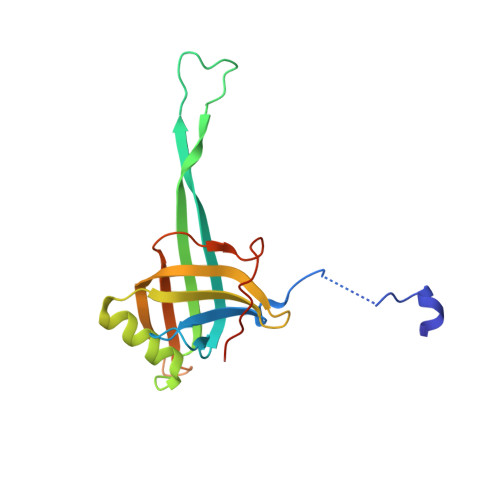Specialized Listeria monocytogenes produce tailocins to provide a population-level competitive growth advantage.
Sigal, N., Lichtenstein-Wolfheim, R., Schlussel, S., Azulay, G., Borovok, I., Holdengraber, V., Elad, N., Wolf, S.G., Zalk, R., Zarivach, R., Frank, G.A., Herskovits, A.A.(2024) Nat Microbiol 9: 2727-2737
- PubMed: 39300324
- DOI: https://doi.org/10.1038/s41564-024-01793-9
- Primary Citation of Related Structures:
8QHS - PubMed Abstract:
Tailocins are phage tail-like bacteriocins produced by various bacterial species to kill kin competitors. Given that tailocin release is dependent upon cell lysis, regulation of tailocin production at the single-cell and population level remains unclear. Here we used flow cytometry, competition assays and structural characterization of tailocin production in a human bacterial pathogen, Listeria monocytogenes. We revealed that a specialized subpopulation, constituting less than 1% of the total bacterial population, differentiates to produce, assemble and store thousands of tailocin particles. Tailocins are packed in a highly ordered manner, clustered in a liquid crystalline phase that occupies a substantial volume of the cell. Tailocin production confers a competitive growth advantage for the rest of the population. This study provides molecular insights into tailocin production as a form of altruism, showing how cell specialization within bacterial populations can confer competitive advantages at the population level.
- The Shmunis School of Biomedicine and Cancer Research, The George S. Wise Faculty of Life Sciences, Tel Aviv University, Tel Aviv, Israel.
Organizational Affiliation:
















